E-JOURNAL ASSIGNMENT 2020
Unit 1: Key drivers of BIM adoption within the UK
1.1. The main driver of BIM adoption within the UK
The followings are the major driver of the Building Information adoption of the United Kingdom:
Digital description and modelling: Digital descriptions and modelling is one of the most important fundamental key drivers of the BMI adaptation process of the United Kingdom. Digital description and modelling procedures drive the development of different NBS BIM tool kits for construction purposes of different buildings and structures of the United Kingdom. Digital description of BMI models helps to provide the proper information of all the components of a building in one place in an effective way (thenbs.com 2020). It helps the customer in accessing the information for the purpose of integrating different aspects of the design. In addition, a digital description also helps to analyse the major mistakes in architecture, cost minimization and the reduction of discrepancies.
The architecture of the construction site: Architecture of the construction site is also a key component or driver of the Building Information Model in the United Kingdom. As per the view of Ghaffarianhoseini et al. (2017), the architecture and design outlet of the building is necessary to develop innovative models to enhance the customer effectively.
Sustainability: One of the most significant key drivers of Building Information Modelling adoption in the United Kingdom is the sustainability of the building model. Sustainability of different building models helps to understand the longevity and capabilities of the building (thenbs.com 2020).
1.2. Justification of the identified drivers
Reason for considering digital description and modelling, architecture and sustainability as a key driver of Building Information Model is their necessity in the construction and information procedure. Digital description greatly helps the audience and customers to understand the design outlet of the construction in an ineffective way. In addition, architecture contributes to the process of evolution, the estimated cost and time or completing the project. However, sustainability enhances the survival period of the building effectively.
Unit 2: Meaning of BIM and its significance on the UK’s construction industry
2.1. Meaning of BIM
The meaning of Building Information Modelling can be defined as the procedure that supports sharing building information by using different tools through a digital representation of functional and physical characteristics of a building. Business information modelling helps to manage the time and budget for the construction process of building (thenbs.com 2020). This process increases the efficiency of different organizations in the process of coordinating project deliveries procedure.
2.2. Significance of the UK’S construction industry
The followings are some of the major significance of Building Information Modelling in the construction industry of the United Kingdom:
Illustration of building life cycle: BIM greatly contributed to the process of illustrating the effectiveness and life cycle of the building to their clients in a proper way. It helps the UK construction industry to manage their business deals by providing a detailed digital description and on-time delivery of their project. In addition, the adaptation of BIM in the functional areas of the UK construction industry helps them to expand their business functional areas and ensure quality services to the global customers (Ghaffarianhoseini et al. 2017).
Prevention of errors creeping: BIM is most significant for the construction industry of the United Kingdom in order to prevent any kinds of errors creeping in at different stages of the development of construction projects. As per the view of Ghaffarianhoseini et al. (2017), BMI model includes inception design of demolition and materials, technologies, product consequences of different construction phases that help in the process of successful completion of the project on the right time. In addition, this greatly contributes to the process of expanding the business functional areas within the UK’s construction industry. However, the implementation of the BMI in the functional areas can help to enter new markets areas effectively.
Unit 3: Consequences of not using agreed standards on a project based on a case study
The UK government has set different standards on making a proper project and to get success regarding the implementation of the project. According to Perano, Della Piana and Casali (2018), these regulations helped to maintain the project properly and to implement it successfully. The UK government has planned to lower the cost by 33% and to improve the export facility by 50% (Perano, Della Piana and Casali 2018). In this case, the first set standard by the UK government was to provide proper training to their staff in order to handle the project accurately. It can be observed that British Petroleum project has failed due to the improper knowledge of handling the project and the lack of training among employees. Along with this, the case study has also included a poor risk management system in their accounts which has lowered down the success rate of the project.
It can also be observed that the UK government has also included increase incapability in the workplace along with renovating the strategies. This system has been also used in the industry previously and has also made a significant impact in order to improve the entire project management system. According to Perano, Della Piana and Casali (2018), bringing forward more research regarding advanced technology, application of the BIM system in the construction project management has a great significance over the success of the project. The building of Manchester Town Hall building is a great example of construction-based project management where the government standardized rules and regulations have been followed. The representation of building structure with virtual 3D vision has helped to understand the depth of the project and to make the project successful. Along with this, the government has also set standards regarding sustainable growth by lowering carbon emission and many other regulations. Anglian water house construction case study has followed the sustainability regulations and has become successful also.
Unit 4: Impact of the CDE process to overcome poor information management
CDE is also known as a Common Data Environment and has a great impact on the information management system. This process helps to collect and to gather all the required information related to the project. This system also helps to disseminate the resources properly within the organization and also to represent it in graphical as well as non-graphical formation. Therefore, as mentioned by Ramchandani et al. (2017), CDE has a great significance in order to manage the entire system. It can be observed that the poor understanding of required resources or the improper knowledge of utilizing resources generally generates poor systems within the organization. In this case, the proper CDE system helps not only to collect accurate resources but also to manage the resources effectively. As argued by Ramchandani et al. (2017), this helps to improve the supplying process of resources within the systemic and also to improve the productivity level. Thus it can be concluded that an effective CDE process minimizes the poor information system.
Collaborative platform is generally referred to as the business category where broad social networking capabilities have been used to process the entire work in proper direction. BIM can be referred to as the open collaborative platform that has great significance in order to arrange the construction site. According to Ramchandani et al. (2017), the CDE program can be integrated with the BIM program in order to manage the system in the BIM program. BIM program mainly involves the digitalization of building design for better understanding, in this sector; the use of CDE will help to identify the accurate resources and also to utilize the resources in a proper manner for getting the success. This process will help to extract the accurate resources and will also minimize the risk level in the entire process and thus it will help in the progression.
Unit 5: Different Information management roles and responsibilities with RACI matrix
Information management refers to all the important generic concepts under the management categories. As mentioned by Hwang, Lin and Shin (2018), it includes planning process, organization, structuring of a plan, processing of the entire resources, controlling along with evaluation or monitoring and in the end the prying of the entire process. It can be observed that a successful information management system helps to make the entire process accurate and thus also helps the organization to meet all of its needs properly. The RACI matrix can be used to define the roles as well as the responsibilities of information management systems.
| Activity | Supervisor | Information manager | Technician | Legal advisor | Information custodian |
| Identification of required information | R | A | C | I | C |
| Gathering of proper information | I | A | C | I | R |
| Interpretation of the gathered information | I | R | C | I | A |
| Determination of the level of importance of information and also to measure the risk associated with the information | I | R | A | I | A |
| Determination of rights to the information | I | R | I | A | C |
| Determination of accurate method to provide business continuity | I | A | R | I | C |
| R: Responsible, A: accountable; C: Consulted; I: Informed | |||||
Table 1: RACI matrix of Information management roles and responsibilities (Hwang, Lin and Shin 2018)
Information manager and information custodian plays an important role in managing the entire information management system. As mentioned by Hwang, Lin and Shin (2018), information custodians are responsible to operate the entire process within the organization and to provide proper guidelines to manage the process. Along with this, they are also responsible to facilitate proper required training and to recognize the challenges within the organization to make the process more perfect. On the other hand, an information manager helps to control and to monitor the entire process. They are also responsible to establish proper operating procedures in order to establish an accurate information management system within the organization.
Unit 6: Seven phases of information delivery cycle and its impact on information management process
Information delivery cycle is another important phrase under BIM of designing building assets that help to express the design in a proper way. As per Hyun, Marjanovic Halburd and Raslan (2016), this also helps to utilize the resources properly which, on the other hand, reduces the risk of environment waste generation and facilitate the program of delivering information accurately.
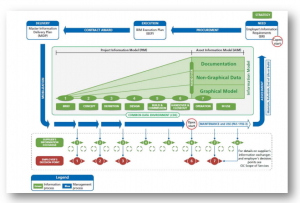
Figure 1: Information delivers cycle (Hyun, Marjanovic Halburd and Raslan 2016)
The important seven phases under the information delivery cycle are planning, understanding of requirements, designing and prototyping using the requirements and also to develop accurate software for resource management. Along with this, it also incorporates testing of the software, deployment and lastly operations and maintenance of the process accurately. All these seven phases are very important under the BIM process in order to deliver accurate data and also to reduce the waste generated in the process. Out of these seven phases, the most important phase that has a significant role in order to minimize the impact of resources in planning and understanding of the requirements is management of resources. As argued by Hyun, Marjanovic Halburd and Raslan (2016), the management of resources must include a complete understanding which will effectively reduce the generation of waste. Along with this, the proper development of software and testing processes will help to facilitate the delivering of information. Thus it will help to make the entire process more accurate and faster to achieve better results.
It can be observed that this phase of the cycle has a great impact on the success of the project. As per Hyun, Marjanovic Halburd and Raslan (2016), this process helps in the accurate decision-making process that makes the entire process authentic. Along with this, this cycle also helps to improve the efficiency level among employees which helps to improve the main system of the organization.
Unit 7: SMART requirements of Employers regarding Information requirements
Employment information requirements are another major part for Building Information Modelling (BIM) that helps to understand both the internal and external requirements of the employees. It includes both internal teams’ requirements along with the requirements from suppliers. As mentioned by Aasheim, Li and Williams (2017), these requirements are closely linked with the successful development of the project and to complete the entire built assets. The SMART requirements for each employee regarding the information project management are as follows-
| Key terms | Requirements |
| Specific | The specific requirements mainly refer to the accurate requirements by employees which are essential to meet the project needs. In this case, the employees require proper advisors, consultants, contractors in their action to understand internal team needs and also the suppliers’ needs. As mentioned by Aasheim, Li and Williams (2017), as the process developed, the specific needs for the employees are mainly related to the building requirements in order to support the procurement process completely. |
| Measurable | The required training system is one of the major measurable requirements for employees. Every employee needs to be trained properly in order to manage the information system accurately and to handle the project in a proper manner. Important documents regarding the project purpose are also considered as measurable requirements for employees. |
| Achievable | Maintenance system, scope related to the services, liability in the design process, management of risks is some of the most important achievable requirements of employees in the building information management system. These resources will help to improve the future structure of the employees effectively. |
| Relevant | Procedures of testing of all the processes used in building, testing, tender pricing documents are some kind of important relevant resources for employees. Relevant resources mainly help to achieve the set objectives for the organization. In this testing process, it will help to achieve the goals of the project and will also help to obtain the target. |
| Time-based | Improvement in the carrier, gaining accurate training is some kind of time-based resources required by employees. This helps to improve productivity and also to manage the work effectively. |
Unit 8: Key tasks important for a procurement process
Procurement is the process that helps to identify all the stepwise requirements needed by the organization to complete an entire task. As mentioned by Fuentes-Bargues, González-Cruz and González-Gaya, (2017), the organization is responsible to manage both public and corporate funds in the process to amend the requirements properly. There are several key tasks that are required to be undertaken while completing the procurement process effectively. One of the most important key tasks is to manage the stakeholders within the organization. Stakeholders possess an important position to maintain the business strategies within the organization. The procurement process helps to establish cost-effective strategies, viable objectives and also strategic sourcing inside the organization to complete any task effectively. Therefore, as mentioned by Fuentes-Bargues, González-Cruz and González-Gaya (2017), one of the key tasks under the procurement process is to establish a strong communication strategy that will help to manage the required resources properly.
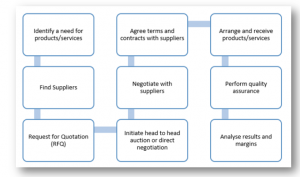
Figure 2: Procurement process flow chart (Fuentes-Bargues, González-Cruz and González-Gaya 2017)
Along with this, another important key task for completing the procurement cycle is to identify comprehensive procurement software and also to enforce procurement policies and processes in action. As argued by Fuentes-Bargues, González-Cruz and González-Gaya (2017), in order to make the effective procurement process, it is important to train the employees about how to manage the resources or to use it for the betterment of the organization. Therefore, the staff is required to be trained in order to assess the resources along with maintaining the standard quality of products or services. It is also important to monitor the contracts that meet with the supplier’s expectations. Thus it can be stated that all these key tasks will help to identify the relevant suppliers for the entire work and is also effective to minimize the terms and conditions of the supplier’s contract.
Unit 9: Impact of BIM level 2 on current and future legal construction arrangement in the UK
BIM or Building Information Modelling is one of the most advanced technologies that help to represent the design of buildings in digital platforms. The UK government has set the regulations to represent the building design digitally to understand the clashes or even the great knowledge of the building design. As mentioned by Alazmeh, Underwood and Coates (2018), with the passage of time, the BIM level has been improved to implement properly in representing the data accurately. It can be observed that as per the BIM level 0 models, only the unmanaged computer-generated data of building assets are used to publicize. However, in the BIM level 1 model. The design was only represented as the 2D version. The development of BIM level 2 versions has made a huge change in the building construction process. This incorporates the collaborative 3D environment data attached to the building assets. Thus it helps to understand the entire building design in detail and also to evaluate the challenges related to the building.
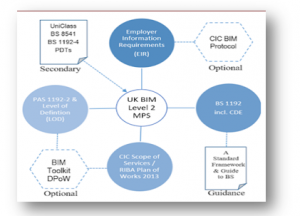
Figure 3: BIM level 2 (Alazmeh, Underwood and Coates 2018)
The BIM Level 2 process has a great significance on the construction design in the UK. As mentioned by Alazmeh, Underwood and Coates (2018), it can be reported that the companies that have accepted the BIM level 2 processes have experienced several benefits like a cost-effective system, successful implementation of the design and many more in action. Under the BIM Task Group, a 2012-2016, BIM document was published that was mandated in the year of 2016, April. This strategy helps to deliver extra benefits and also better value for the business cases; those have incorporated this technique in their system. As per this system, a practice code has been generated for the capital phase and then after the operation phase. A transferring tool was also introduced that helps to transfer build data models to respective facility managers. In future this process will also have a great impact in order to develop the construction management system.
Unit 10: Key consideration and process involved in approving information as SHARED in Common Data Environment and their responsibilities
Common Data Environment (CDE) is a very crucial process in preparing the digital representation of building assets under the process of BIM. As per the UK government’s rules and regulations regarding the construction terms and conditions, it is important to present the design of the building in a digital method. According to Kongsgard et al. (2017), the main aim of this process is to get all the clear concept of building design and to implement it properly. In this process CDE, the entire information for the building process is to manage properly for further use in the future.
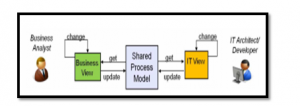
Figure 4: Shared Process Model (Kongsgard et al. 2017)
Shared process model is a type of prototype that supports the independent parts of the Information process of the Building Information Modelling. Shared process mainly performanced in three key operations namely; gets, changes and updates. Get is associated with the process of returning to the existing version of IT in the business performance. Change is associated with the permission for modification in order to manage the information process. In addition, updates help to synchronize all the information with the Common Data Environment platforms in order to support the process. As per Kongsgaard et al. (2017), major common changes in the CDE platforms are propagated and controlled by the updates operations process in a Building Information Modelling. Shared process model greatly contributes in the process of improving the functional areas of different buildings models in order to represent effectively to the clients. The uploaded items in the website are used to give the status of BPMN2 that will help to make appropriate links with others. In the end, as argued by Kongsgard et al. (2017), the entire design can be shared with the client for their approval as well as suggestion. Thus this entire process possesses a great impact over the designing of building assets.
Unit 11: Discussion of clash detection and crash avoidance
BIM is a modern technique where the building asset is used to digitize the 3D structure of a building. In this process, different models of a building are designed under the supervision of experts. As mentioned by Akponeware and Adamu (2017), this includes the details of building assets, even the non-geometric designs also to represent the entire design digitally. Clash detection is the process which shows how much space is occupied by each element that is used to make building assets. As mentioned by Akponeware and Adamu (2017), in building information modelling, the clash detection process also helps to understand where two elements are interfering with each other in the proposed design for the building. Workflow clash detection in the 4D structure of building design helps to resolve all the scheduled clashes that may be faced by the workers while designing any building.

Figure 5: Clash detection process (Akponeware and Adamu 2017)
On the other hand, clash avoidance is considered as one of the most important and broad concepts under BIM, that helps to understand the process of making digital models of the building. As mentioned by Akponeware and Adamu (2017), this helps to create a digital replica of the entire building and thus helps to interpret how the building will look in future.
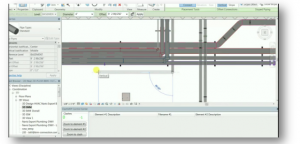
Figure 6: Representation of Clash avoidance (Akponeware and Adamu 2017)
The process, clash avoidance and clash detection have a great significance in order to make a proper digital model of building and to represent the design accurately in practical fields. One of the major benefits of the clash avoidance process is the proper identification of clashes within the building’s planned design. According to Akponeware and Adamu (2017), in BIM methods of building construction, if two different models which have been used in the construction of a building occupy each other space, then it is referred to as clashes in construction. Thus it can be stated that the clash avoidance process helps in the clash detection process with the help of proper identification of clashes of two different models within the building structure.
Unit 12: Key consideration and process involved in approving information as PUBLISHED in Common Data Environment and their responsibilities
Under UK government construction rules and regulations, digital representation of building assets is very important while constructing any building blocks. As per Karamitsios, Orphanoudakis and Dagiuklas (2016), in order to create a building representation, first, it is important to gather all the required documents and information related to the building asset. CDE or generally known as Common Data Environment used to gather, maintain, manage and also to distribute the information in a proper manner. According to Karamitsios, Orphanoudakis and Dagiuklas (2016), this distribution or dissemination of the authorized information regarding the building making process is very vital in the BIM process. This helps to maintain the collaboration within the team members and also helps to build a strong concept about the digital version of the building.
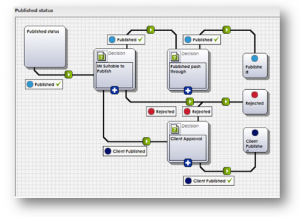
Figure 7: PUBLISHED process under Common Data Environment (Karamitsios, Orphanoudakis and Dagiuklas 2016)
Under the rules and regulations of CDE, it is firstly important to get approval of the not verified design of the building. It can be observed that the designers of the building blocks are first responsible to create a non-verified design of the building by keeping the rules of sustainability in mind. After that, the entire design went for approval. After getting the approval, the entire data is SHARED with the team members and also with the client. After getting the approval from the client, the next workflow takes place under this CDE process. The entire digital representation of the process is PUBLISHED outside. As mentioned by Karamitsios, Orphanoudakis and Dagiuklas (2016), it is published either as a form of finished article or it is directly passed over to the client. Thus it provides greater reliability to the work and also reduces the risk regarding the work.
Journals
Aasheim, C.L., Li, L. and Williams, S., (2019). ‘Knowledge and skill requirements for entry-level information technology workers: A comparison of industry and academia’. Journal of information systems education, 20(3), 10. Available from <http://jise.org/volume20/n3/JISEv20n3p349.pdf> [22 April 2020]
Akponeware, A.O. and Adamu, Z.A., (2017). ‘Clash detection or clash avoidance? An investigation into coordination problems in 3D BIM’. Buildings, 7(3), 75. DOI: https://doi.org/10.3390/buildings7030075
Alazmeh, N.I.D.A.A., Underwood, J. and Coates, P., (2018). ‘Implementing a BIM collaborative workflow in the UK construction market’. International Journal of Sustainable Development and Planning, 13(1), 24-35. Available from <http://jise.org/volume20/n3/JISEv20n3p349.pdf> [22 April 2020]
Fuentes-Bargues, J.L., González-Cruz, M. and González-Gaya, C., (2017). ‘Environmental criteria in the Spanish public works procurement process’. International journal of environmental research and public health, 14(2), 204. DOI: https://doi.org/10.3390/ijerph14020204
Ghaffarianhoseini, A., Tookey, J., Ghaffarianhoseini, A., Naismith, N., Azhar, S., Efimova, O. and Raahemifar, K., (2017) ‘Building Information Modelling (BIM) uptake: Clear benefits, understanding its implementation, risks and challenges’. Renewable and Sustainable Energy Reviews, 75, 1046-1053. Available from <http://faratarjome.ir/u/media/shopping_files/store-EN-1519546702-7074.pdf> [22 April 2020]
Hwang, Y., Lin, H. and Shin, D., (2018). ‘Knowledge system commitment and knowledge sharing intention: The role of personal information management motivation’. International Journal of Information Management, 39, 220-227. Available from <http://entofa.net/wp-content/uploads/2019/11/Knowledge-system-commitment-and-knowledge.pdf> [22 April 2020]
Hyun, S., Marjanovic Halburd, L. and Raslan, R.M., (2016), September. ‘Bridging The Performance Gap: Information Delivery Manual Framework To Improve Life-Cycle Information Availability’. In Building Simulation & Optimization 2016-Third IBPSA-England Conference, 36-43. Available from <https://discovery.ucl.ac.uk/id/eprint/1518992/1/Marjanovic-%20Halburd_BSO%202016%20Hyun%20et%20al.pdf> [22 April 2020]
Karamitsios, K., Orphanoudakis, T. and Dagiuklas, T., (2016), November. ‘Evaluation of iot-based distributed health management systems’. In Proceedings of the 20th Pan-Hellenic Conference on Informatics, 1-6. Available from <https://dl.acm.org/doi/abs/10.1145/3003733.3003751> [22 April 2020]
Kongsgard, K.W., Nordbotten, N.A., Mancini, F., Haakseth, R. and Engelstad, P.E., (2017). ‘Data leakage prevention for secure cross-domain information exchange’. IEEE Communications Magazine, 55(10), 37-43. Available from <https://www.duo.uio.no/bitstream/handle/10852/59338/4/output%20%281%29.pdf> [22 April 2020]
Perano, M., Della Piana, B. and Casali, G.L., (2018). ‘Project and Risk Management in a Global Context: The Importance of Cultural Risk’. In Global Business Expansion: Concepts, Methodologies, Tools, and Applications (1525-1548). IGI Global. DOI:10.4018/978-1-5225-2673-5.ch009
Ramchandani, N., Johnson, K., Cullen, K., Hamm, T., Bisordi, J. and Sullivan-Bolyai, S., (2017). ‘CDE Perspectives of Providing New-Onset Type 1 Diabetes Education Using Formal Vignettes and Simulation’. The diabetes educator, 43(1), 97-104. Available from <https://journals.sagepub.com/doi/abs/10.1177/0145721716676893?journalCode=tdea> [22 April 2020]
Website
Thenbs.com (2020) Building Information Modelling [online] available from <https://www.thenbs.com/knowledge/what-is-building-information-modelling-bim> [15 April 2020].



I found this website called that might fit what you’re looking for Sex 11
https://aev99.day/
I found this website called that might fit what you’re looking for New88
https://new8841.org/